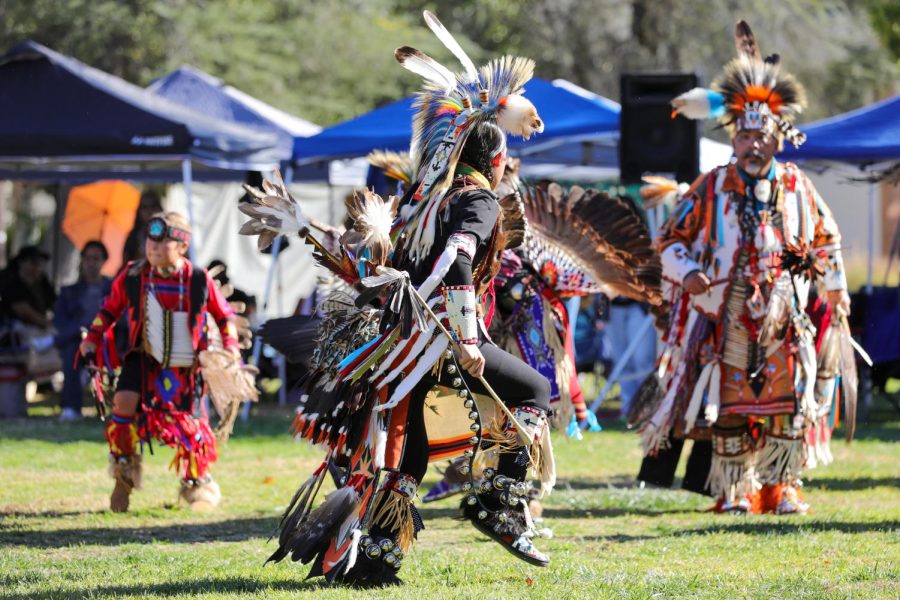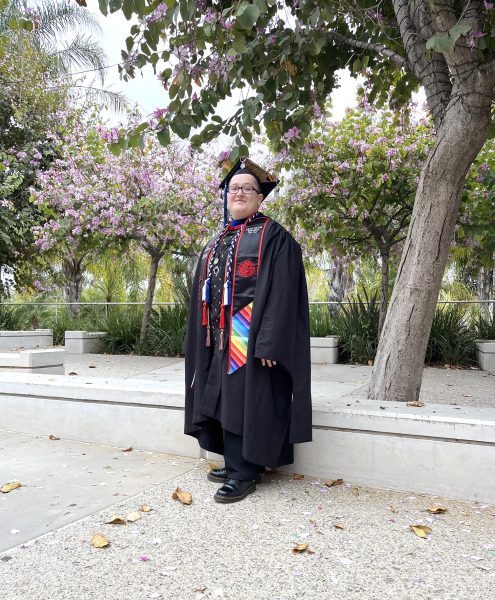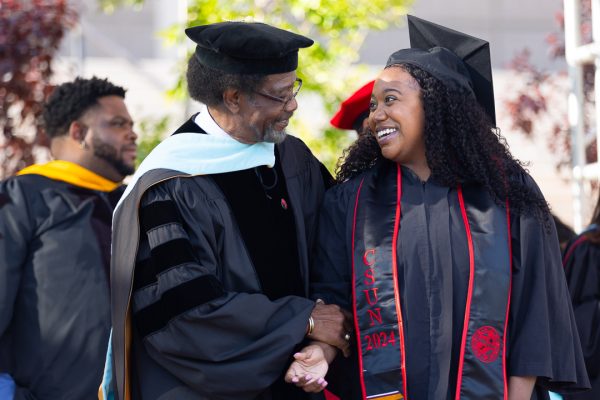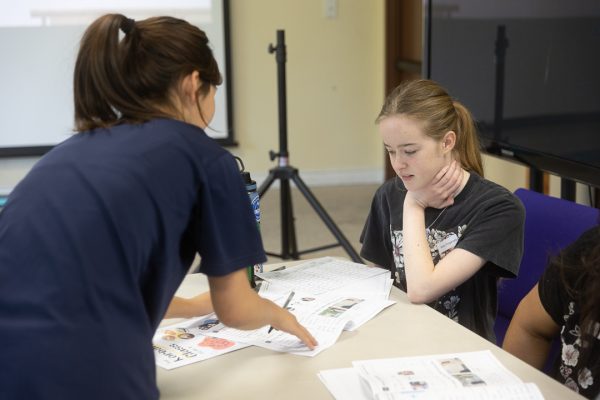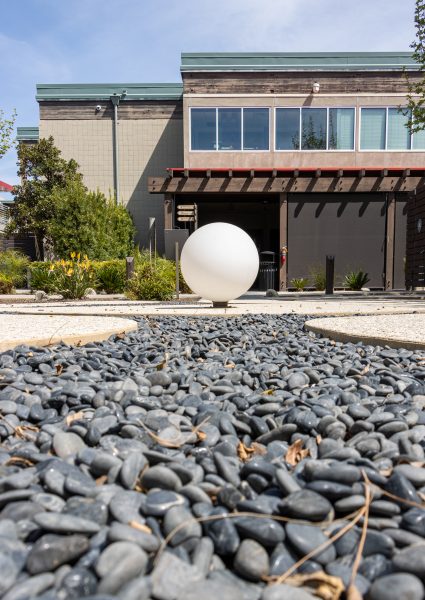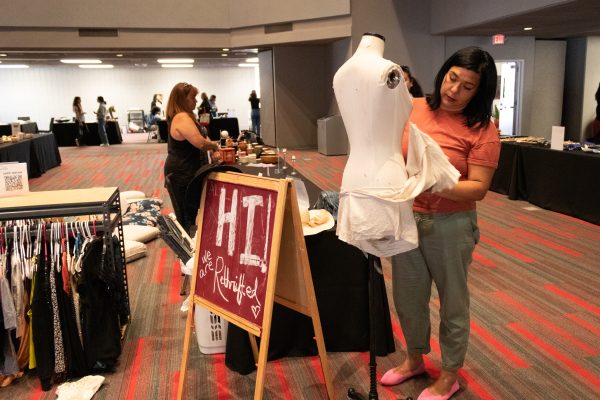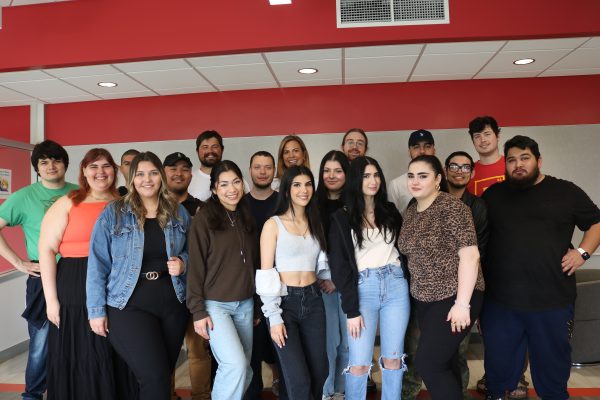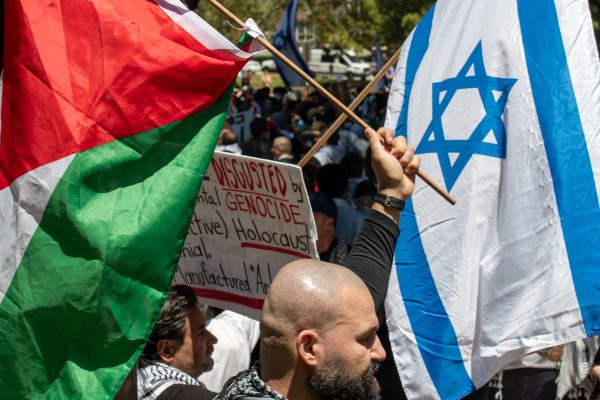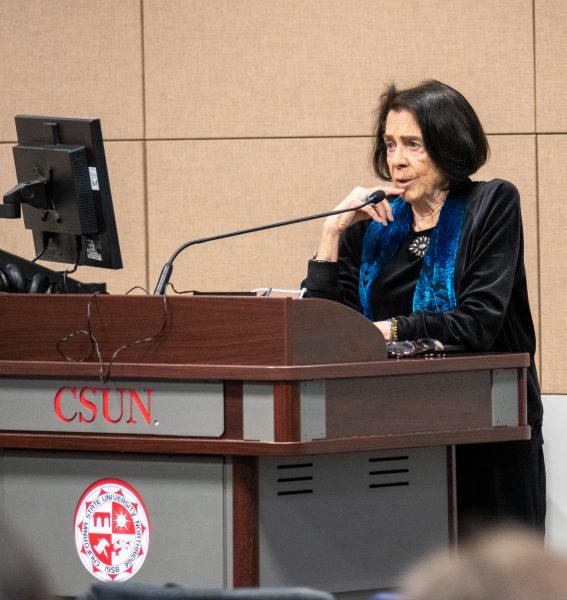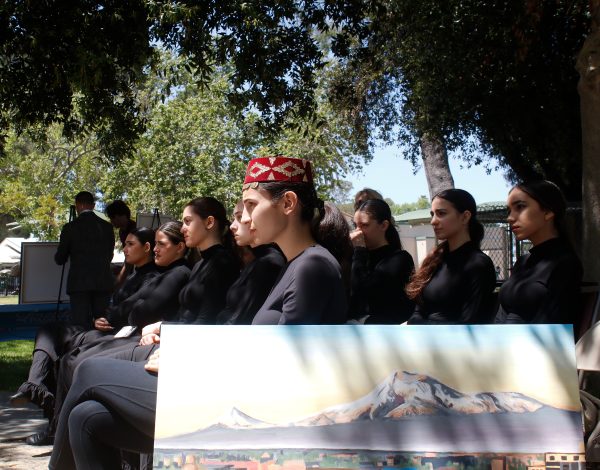‘37th Annual CSUN Powwow’ celebrates Native American culture
December 16, 2022
The powerful songs from the northern and southern drums guided the head dancers under a brilliant blue sky as they celebrated their Native American culture at the “37th Annual CSUN Powwow.” Put on with the help of CSUN’s American Indian Student Association, tribes from across the country gathered around a large dance circle on the grass of the Sierra Quad on Nov. 26 to share songs, dances, art and gifts.
These celebrations are an essential part of Native American culture because it is a time when people from different tribes get to interact with the rest of the Indigenous community. The term originated from the Algonquian word “Pau Wau,” which refers to a medicine man. As white settlers began asserting themselves on Native American land, they used the word by calling any gathering of American Indians a “powwow.”
“Powwows are a celebration of life, we are here to meet people,” said Robert Roberts, a traditional northern dancer at the event. “We dance in a circle, circles are an important shape to Native people because the shape has no beginning or ending and that is how the world works.”
Tradition plays a vital role at the celebrations, and the one held at CSUN was no exception. Since the first CSUN event, which was held on the grass where the University Student Union is currently located, the celebration has been an intertribal affair.
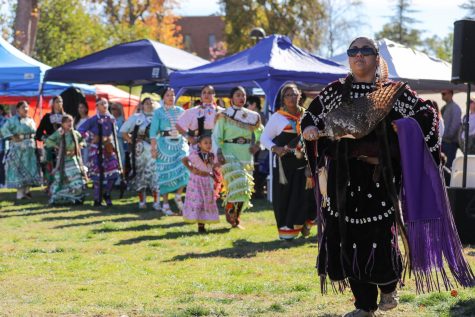
Each event begins in a similar order, which was the case at the “CSUN Powwow.” “The Gourd Dance” is one of the first songs, followed by the American Indian grand entry opening ceremony. The celebration has four head dancers: a head man, woman, boy and girl. They are selected due to their knowledge of traditional songs and dances and must participate in as many dances as possible.
A northern and southern drum are on either side of the emcee and arena director, facing all of the represented tribes that encompass a large dance circle. The grand entry is a procession of flags, head dancers and tribe leaders, all behind the eagle staff bearer. After the opening ceremony, each event has different songs, dances and cultural ceremonies, which makes each gathering unique in its own way.
“That eagle staff represents all of the tribal nations in this country and the great divide that American Indians have in our homeland,” said Randy Pico, the emcee for the event.
Following the eagle staff, the procession entered the arena and danced while representatives of the Fernandeño Tataviam Band of Mission Indians said a prayer and blessed the circle. After the circle was blessed, no one was allowed through it without dancing.
The northern drum, played by Blue Star, and the southern drum, played by Hale & Co, led the dancers’ singing throughout the festivities, switching between dances. According to head girl Aurelia Hale, the drum songs are “Mother Earth’s heartbeat.”
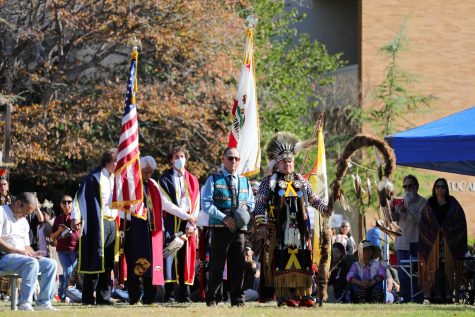
“Singing is a traditional aspect of the Lakota people, everything is done in song,” said Mike Watts, a member of Blue Star. “The drum is the center of all activities. If there is anything that always happens, it is song, and there is always food.”
The dancers wore traditional regalia handmade from beads, feathers and porcupine quills. Each part of their regalia has a cultural significance, which was highlighted at the coming-in ceremony held later in the evening. This ceremony happens when a young dancer enters the circle and commits himself to becoming an intertribal ceremonial dancer.
Blankets are placed at the four directions in the circle with significant parts of his regalia on them. It is common for dancers in the circle to wear full regalia that was gifted to them in the coming-in ceremony. Each blanket has a different part that makes up his regalia that was gifted by tribal elders who promised to help the young dancer in the style he chooses. The elders fasten each part of the regalia to him, and once it is all secured, they will trail behind and guide him as he dances around the circle.
The eagle feathers, which are very prominent in regalia, are significant to the Native American people. The feathers must be secured tightly to the regalia, so they do not fall out while dancing. If a feather falls onto the floor, it must be gifted to an elder. Some tribes believe that if a feather falls, it means a relative is going to die soon.
“The eagle is considered the messenger of the people and they carry our thoughts and prayers to the ones above,” said Roberts. “The highest honor that a Native could give somebody is to give them an eagle feather.”
This is the second “CSUN Powwow” that has been held since the loosening of COVID-19 restrictions. Jason Vela, head boy for the event, has been dancing since he could remember. He balances his academics with his culture to attend many celebrations throughout the year.
“It’s not everyday we get to do this, so when we do get to come out, it’s really something we get excited about,” said Vela. “Powwows get to show what our culture means to us and how we do it to whoever comes.”
